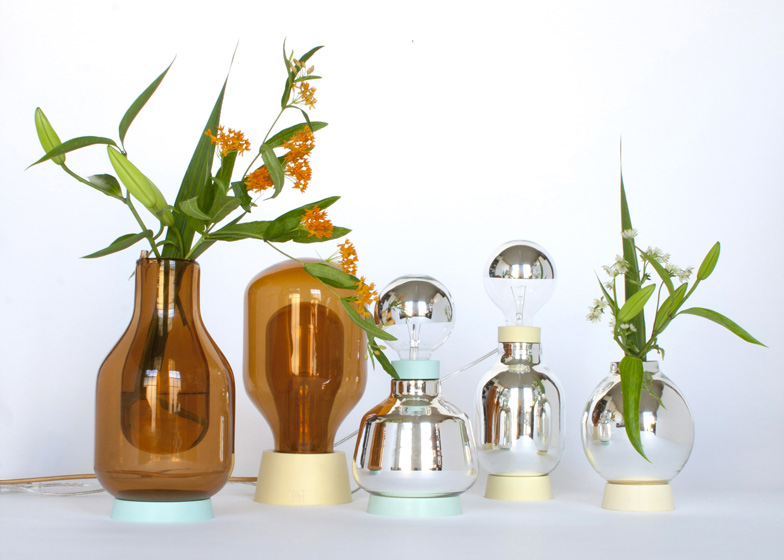Dutch Design Week: a Victorian scientist's laboratory experiments inspired Dutch designer David Derksen to create these glass lamps and vases, which have double walls like a Thermos flask.
The Dewar range is named after 19th century scientist James Dewar, who was researching absolute zero temperature when he invented the isolating container that became known as a Thermos flask.
"Laboratory glassware has a very specific formal language," Derksen said, explaining that the glass tubes are shaped on lathes under extreme heat, while rubber parts are often used in the laboratory to seal or connect the containers. "The material combination is both functional and aesthetically beautiful," he added.
In Thermos containers, a thin layer of silver is sandwiched between two walls of glass to reflect heat and maintain the temperature inside the flask.
The Flask Vase and Flask Light in Derksen's collection are made from two layers of glass, between which are layers of silver salvaged from old coffee flasks.
The Dewar Light and Dewar Vase are made from borosilicate glass that has been darkened by radiation. The bases of the lamps and vases are made from silicone rubber.
The project was on show as part of an exhibition called Objects for Sale during Dutch Design Week in Eindhoven last week. See all our stories from Dutch Design Week.
Derksen graduated from the Design Academy Eindhoven in 2009 and completed his masters in Industrial Design Engineering at TU Delft before setting up his studio in Rotterdam.
In Milan this year Derksen worked with designer Lex Pott to create selectively oxidised mirrors for an exhibition called The Front Room.
We previously featured Benjamin Hubert's collection of glassware inspired by laboratory equipment and Maarten De Ceulaer's series of coloured lights inside glass vessels and beakers.
See all our stories about glass »
See all our stories about lamps »
See all our stories about vases »
Photographs and styling are by Camille Cortet.
Here's some more information from the designer:
The Flask Vase, Flask Light, Dewar Light and Dewar Vase are the first outcomes from a continuing investigation into the beauty, form and manufacturing techniques found in scientific glassware. As a direct result of the production processes used in its creation, Laboratory glassware has a very specific formal language. All vessels and instruments start as glass tubes that are reshaped on lathes under extreme heat. Rubber parts are often used to connect the various instruments or to seal the vessels. Acting as a malleable and gentle buffer for the glass, the material combination is both functional and aesthetically beautiful.
This contrast of materials and their aesthetic formed the starting point for this investigation. The project is named after James Dewar, who was in search of the absolute zero temperature point and invented the Dewar flask or isolating container. These containers (also known as Thermos flasks) use two walls of glass which sandwich a thin layer of silver to reflect the heat. These relatively complex parts can be found inside the everyday coffee flask and were the inspiration for this project and its initial outcomes.

